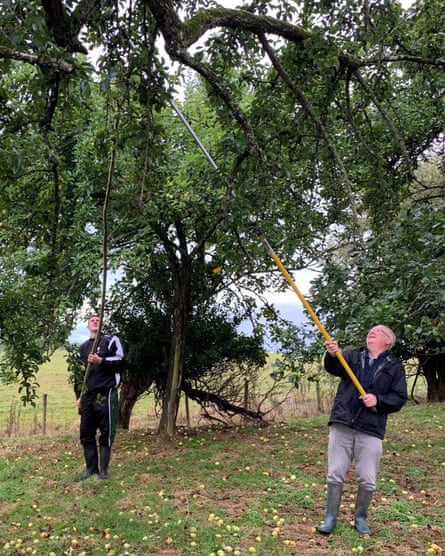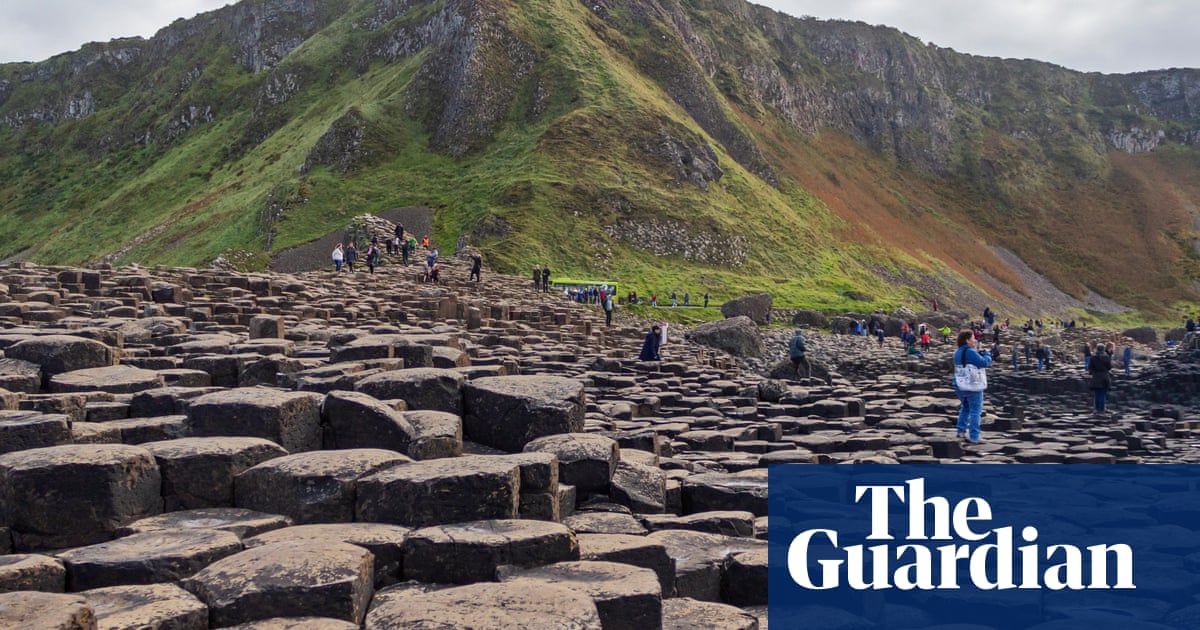They are a symbol of the bucolic English countryside and a staple of the West Country landscape, but since the second world war, 90% of traditional orchards have disappeared.
Defined as a collection of five or more fruit trees planted in permanent grassland and managed in a non-intensive way, traditional orchards have suffered from neglect, been razed for development and converted to intensive bush orchards or alternative crops.
Now cider makers are calling on the government to protect what they say is one of the country’s most environmentally friendly farming systems. Traditional orchards are often wildlife havens with rare birds and insects, and allow silvopasture – where livestock grazes on a variety of plants in forests and tree-filled pastureland, eliciting multiple uses from one field. Older orchards, proponents say, are excellent carbon storers.
Late last year, David Nash of Redvers Cider & Perry in Herefordshire wrote to his local MP, the Green party’s Ellie Chowns, about the decline and asked her to highlight the issue in parliament. “Without protection, [traditional orchards] could be lost altogether,” wrote Nash.
Nash, whose cider uses several varieties of pear and apple, some from 300-year-old trees, told the Observer: “The writing is on the wall unless something is done. You only have to drive along the roads around here to see the decline. You see them being felled or dying off because no one’s replacing them. There’s no commercial value.”

David Lindgren of cider producer Bushel+Peck, who is chair of trustees at the Gloucestershire Orchard Trust, says traditional orchards are among “the most biodiverse agricultural environments”. Lindgren said tree preservation orders – legal orders protecting trees – did not go far enough, and called for “more support for the conservation and creation of traditional orchards, and greater preservation and protection for orchards within the planning system”.
Nash’s letter, which was signed by bodies including the Gloucestershire Orchard Trust and the UK Orchard Network, suggested greater protections for cider as a designation. These included a rise in minimum juice content for cider from the current 35% – which can be from concentrate and imported – to 50%, bringing the UK in line with the US. This could help support British apple growers, Nash said. He also called for a voluntary scheme whereby cider makers would commit to sourcing a percentage of fruit from traditional British orchards, with a label similar to the Red Tractor scheme.
Chowns told the Observer: “The decline of traditional orchards is a serious concern for North Herefordshire, given their importance for biodiversity, heritage and small-scale cider and perry makers. These orchards are a vital part of our landscape and rural economy, and we must do more to protect them. I am keen to explore ways to better support traditional orchards, including ensuring government schemes like the countryside stewardship scheme and sustainable farming incentive are delivering real benefits.”
She added there was a “strong case” for raising the minimum juice content and promoting the use of British apples. “I will continue to look for opportunities to raise these important issues in parliament.”
Britain has experienced some of the steepest declines in insect species globally and has some of the world’s lowest biodiversity levels. “This has undoubtedly been exacerbated by the loss of traditional orchards, and preserving this habitat can play a key role in restoring biodiversity,” said Nash. Elevating them to an “irreplaceable habitat” on a par with ancient woodlands was a “high-ambition, low-likelihood option”.
Nash said that, while traditional orchards are a priority habitat under the UK biodiversity action plan, “to change the agricultural land use, the owner must conduct an environmental impact assessment – however, this does not normally apply to a commercial decision to replace a traditional orchard under two hectares with an intensive bush orchard”.
after newsletter promotion
Last month, Felix Nash (no relation), founder of the Fine Cider Company, met with several industry figures, including supermarket buyers, at the National Fruit Collection in Kent to discuss traditional orchards. They will also be the focus of the London Cider Salon to be held at Tate Modern in London in June. Felix said raising awareness of the environmental benefits was vital.
While there is “nowhere near enough protective legislation”, Felix said the cider world must be “proactive”. He added that the continued rise in “fine cider”, which is usually made with 100% apple, was more likely to encourage preservation of orchards than legislation. “Government is rarely proactive, more reactionary. You’d only get a change in juice content if a big enough corner of the industry is willing to change it.”
The 17th-century diarist John Evelyn described cider as “the native wine of England”, and producers are now making bottles of fine cider that cost up to £38 and sell at Michelin-starred restaurants such as the Fat Duck in Bray, Berkshire. Fine cider producers such as Devon’s Find & Foster and Wilding in Somerset are leading the way, saving local orchards by taking their fruit and planting new ones.
Find & Foster’s Polly Hilton told the Observer that the government could create a protected designation of origin “highlighting when cider is made from 100% apples grown in traditional orchards, supported by marketing, promotion and cider tourism development. [It] would help to make traditional orchards economically sustainable, which often seems critical to their survival.”

.png) 3 months ago
71
3 months ago
71

















































